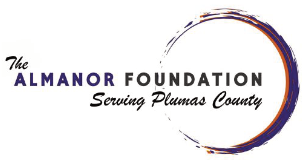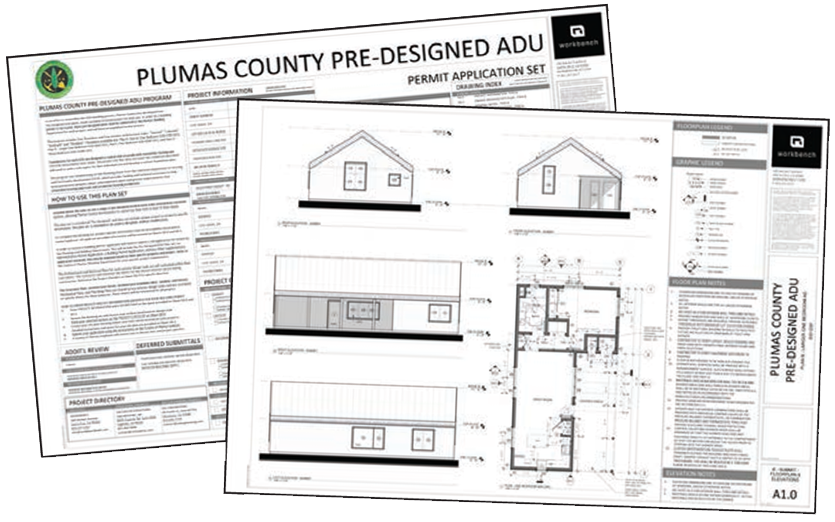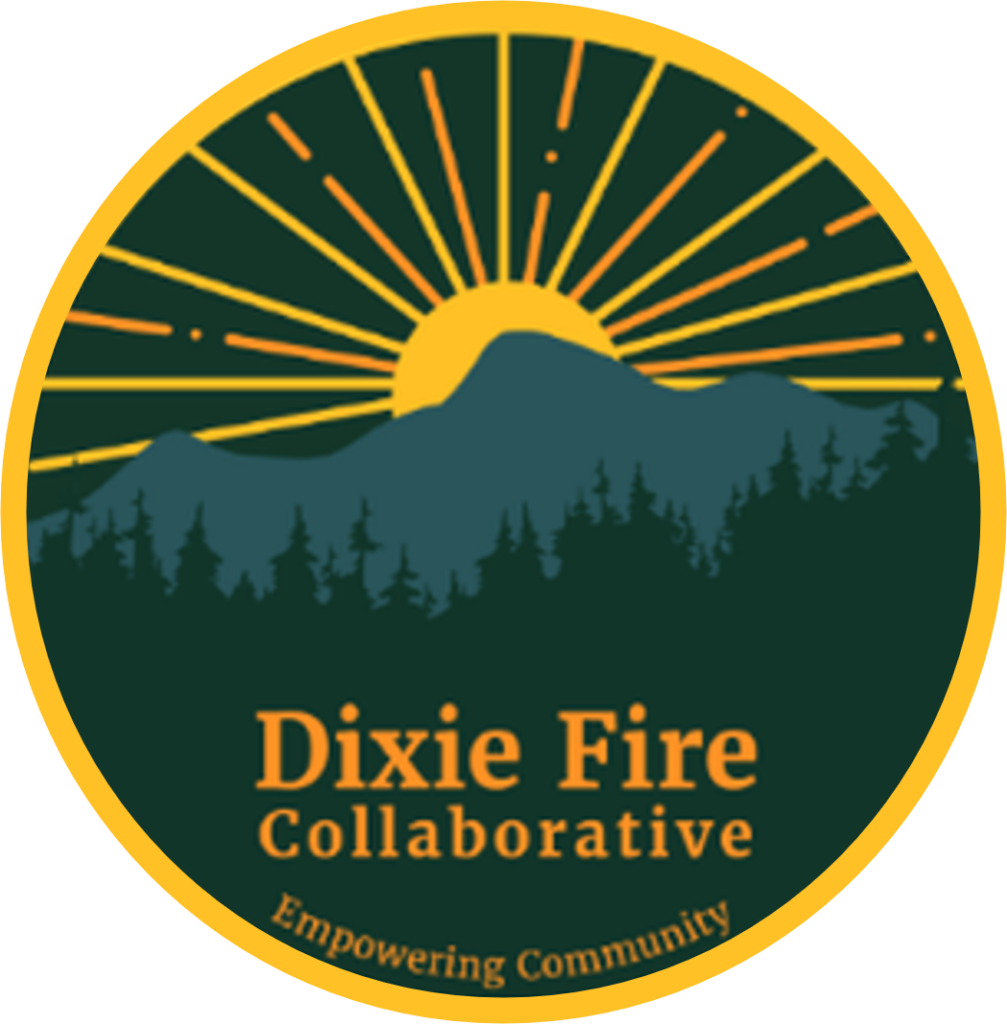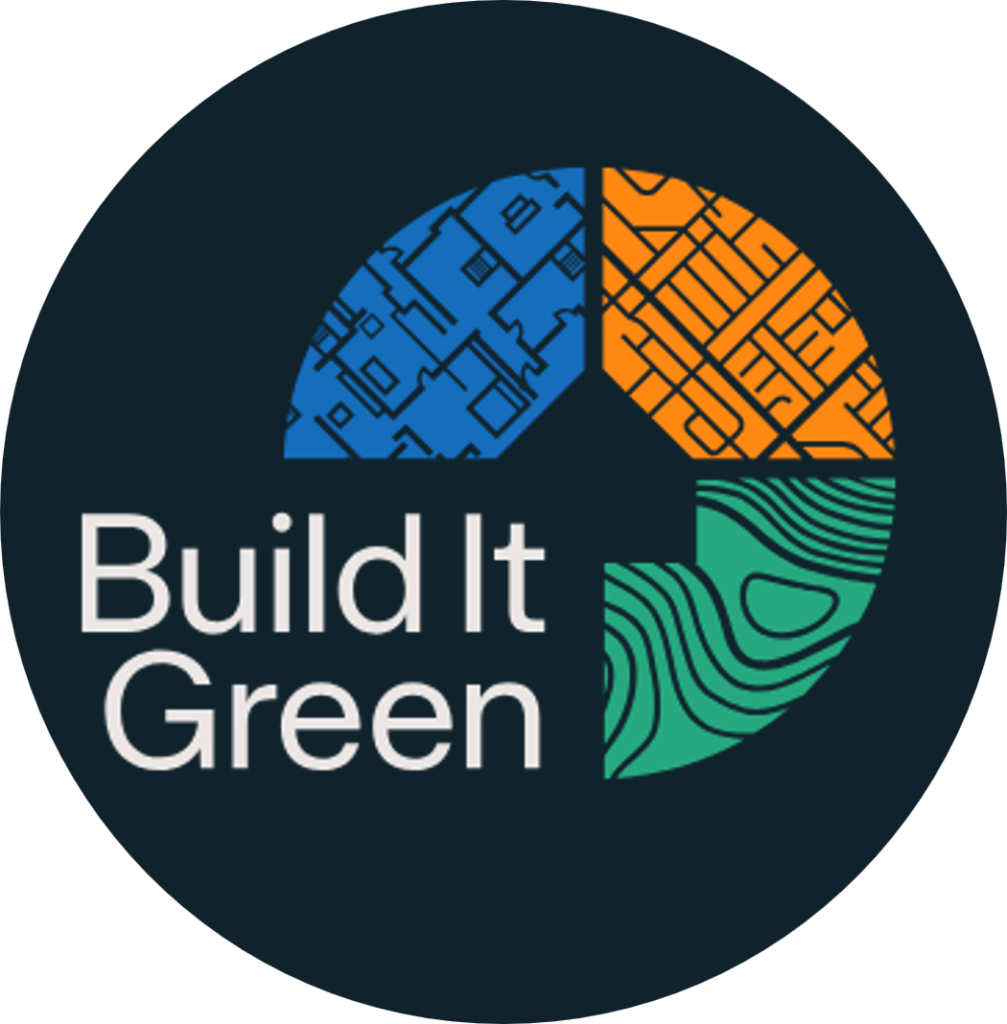Building Stronger
Supporting Attainable Housing for Plumas County's Workforce
Addressing the Urgent Need for Workforce Housing
We are committed
to the creation of
attainable housing solutions
Ensuring Access
Ensuring our workforce has access to affordable housing is a significant challenge for our community. The 2021 Dixie Fire exacerbated this issue by devastating the towns of Greenville, Canyon Dam, and Indian Falls, impacting the lives and livelihoods of many across the county. To address this critical need, TAF has taken the lead in the research, planning, and design of creative and lasting solutions to address this critical need.
Working Together to Build a More Resilient Future
Our Vision
To create a Plumas County where workers across all sectors can live and thrive in homes they can afford.
Our Mission
Our mission is to identify and lead efforts to develop and implement strategies to create attainable workforce housing in Plumas County, particularly in communities impacted by the Dixie Fire.
TAF leads the collaborative effort of the Plumas Housing Council driven by organizations, government entities, and major employers in Plumas County.
The Housing Council and TAF are committed to transparency, community engagement, and finding solutions that fit the unique needs of our region.
Creating Innovative Solutions for Attainable Housing
The complex housing ecosystem in Plumas County requires a diversity of stock, pricing, typologies, and locations.
TAF has connected with local experts and national innovators to find solutions that are:
- Place-based: Reflecting the local resources, culture, and market.
- Sustainable: Supported by funding streams, the economy, materials, and workforce.
- Regenerative: Promoting circular economies and funding streams.
multi-pronged approach
To address the diverse housing needs of the community, a multi-pronged approach is being pursued:
BUILding homes: rra development model
This model leverages existing zoning to increase housing density while preserving community identity. By building single-family homes with attached and detached ADUs, a mix of ownership and rental opportunities for working families can be created.
supporting renters: Lease to Locals Program
Partnering with Placemate and Plumas Rural Services, this program will provide rent subsidies to local renters, helping to ease the burden of rising housing costs.
supporting home ownership: Trio Program
The Plumas County Community Development Commission’s Trio Program will support first-time homeownership through a lease-to-own model, making the dream of homeownership a reality for more families.
build on your own property now.

Pre-Designed ADUs
Plumas County has four different PreDesigned ADU Plans available to construct a detached ADU. These plans were created to reduce cost and help expedite the review timelines for your ADU project.

Pre-Designed ADU:
Goldrush Elevation

Pre-Designed ADU:
Meadow Elevation

Pre-Designed ADU:
Summit Elevation
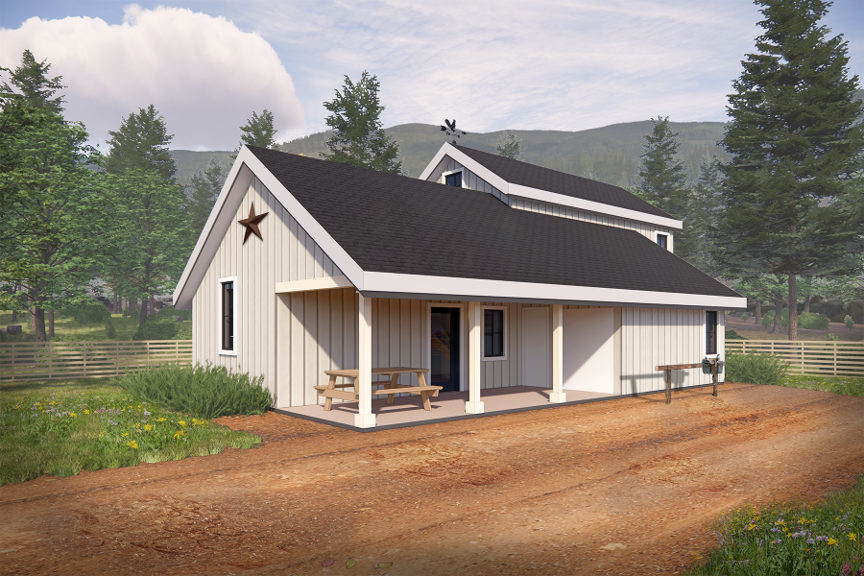
Pre-Designed ADU:
Lakeside Elevation
Key Information
Frequently Asked Questions
Q: What are the Key Accomplishments of The Almanor Foundation’s Dixie Fire Recovery and Housing Initiative
A. The Almanor Foundation’s Dixie Fire Recovery and Housing Initiative has achieved significant milestones in supporting the recovery and rebuilding efforts in Plumas County. The initiative has significantly accelerated the recovery process, laying the groundwork for long-term recovery planning and the rebuilding of housing and infrastructure. The collaborative and community-focused approach has placed the recovery process approximately 18 months ahead of a typical schedule.
- Fiscal Sponsorship and Infrastructure Improvements: Through work with LMNOP, the Almanor Foundation secured an Alumbra Grant and served as the fiscal sponsor, enabling the development of the Conceptual Master Infrastructure Plan (CMIP) for Indian Valley. This plan is crucial for pursuing $50 million in funding for essential infrastructure improvements, including upgrades to water, sewer, fire suppression, and backup energy generation systems.
- Support for Numerous Recovery Projects: The Almanor Foundation has supported numerous recovery projects, working with various organizations to secure funding. This collaborative approach has been instrumental in addressing the diverse needs of the affected communities.
- Completion of Key Planning and Design Documents: The initiative resulted in the completion of several critical planning and design documents:
- Phase 0 Summary Report (May 2022): Defined community needs and provided the scope for long-term planning and visioning efforts. Funded by The Almanor Foundation’s Wildfire Relief & Recovery Fund, The Common Good Community Foundation, Dixie Fire Collaborative, Plumas Strong, Sierra Institute, Sobrato Philanthropies, and North Valley Community Foundation.
- Town Center Design Guidebook (Phase 2, November 2023): Offered recommendations for building practices aligned with community needs. Supported by the Dixie Fire Collaborative, The Almanor Foundation’s Wildfire Relief & Recovery Fund, North Valley Community Foundation, and the Cook Family.
- Canyon Dam Summary Report (November 2023): Detailed a ten-week project in Canyon Dam, focusing on workforce housing strategies and community regeneration. Funded by The Almanor Foundation.
- Almanor Basin Strategic Housing Plan (June 2023): Proposed strategies to address the lack of affordable housing in Plumas County and the Almanor Basin.
- Community Engagement and Input: Recognizing the importance of community involvement, the initiative organized numerous public meetings. Over 10 meetings were held in Greenville and 3 in Canyon Dam and the Lake Almanor Basin to discuss the Strategic Plan and implementation. They also participated in all Dixie Fire Collaborative meetings.
- Exploration of Housing Development Strategies: The initiative explored various housing development strategies:
- Creating Scalable Models – Examined the feasibility of developing sites for single-family homes with two additional dwelling units, as a scalable and replicable housing development model.
- Attracting Developers: While efforts to attract non-profit developers were unsuccessful, the initiative engaged with two potential for-profit developers. This marks a shift from the absence of any developers previously interested in the region.
- Collaboration with RRA: Partnered with Reconstruction Recovery Advisors (RRA) to develop a multi-variable housing development calculator. This tool is designed to demonstrate how to keep housing costs within an 80-120% Area Median Income target range, aiming to incentivize for-profit developers.
- Mapping Available Sites: Mapped available sites zoned 7R Plus (Single-Family Residential) and MR (Medium Residential) for potential development.
- Formation of Plumas Housing Council: Formed the Plumas Housing Council, consisting of major employers and other stakeholders. The council’s meetings provide a platform for addressing housing-related challenges and coordinating recovery efforts.
- Securing Grants for Innovative Tools: Secured a grant to develop a “Community Tool (Mix and Match Game)” to assist other communities in creating housing solutions. This initiative also helps keep Plumas County at the forefront of funders’ attention.
Q: What was the primary objective of TAFs Strategic Housing Plan?
A: The primary objective of The Almanor Foundation’s Strategic Housing Plan was to propose future-oriented strategies to address the shortage of affordable housing in Plumas County specifically Indian Valley/Greenville and the Almanor Basin. The plan was completed in June 2023. These strategies were presented and discussed in over 10 public meetings held in Greenville, Canyon Dam, and the Almanor Basin.
Q: What is the Strategic Housing Plan, and what are its key components?
A: The Strategic Housing Plan (SHP) is a comprehensive, long-term vision spearheaded by The Almanor Foundation and implemented by LMNOP Design, Inc. It focuses on workforce-centered housing in the Almanor Basin and Indian Valley regions of Plumas County. This plan prioritizes community involvement and aims to create a foundation for affordable housing by initially developing 6-12 units, with the intention of scaling up in the future. The SHP is comprised of several key elements:
- Housing Systems Map: This visual tool simplifies the home construction process for those rebuilding after the Dixie Fire.
- Lake Almanor Basin Housing Assessment: This document provides a fundamental understanding of the region’s demographics and housing needs.
- Strategic Housing Plan Summary: The plan outlines a series of strategies designed to address affordable housing shortages in Plumas County. These strategies were presented and discussed in over 10 public meetings held in Greenville, Canyon Dam, and the Almanor Basin.
Q: What is the Plumas Housing Council, and what is its role in addressing workforce housing needs?
A: The Plumas Housing Council is a collaborative group formed to tackle the shortage of attainable workforce housing in Plumas County. Spearheaded by The Almanor Foundation, it comprises various organizations, government bodies, and major employers. The council aims to pool resources and expertise to create effective strategies for developing workforce housing, particularly in areas affected by the 2021 Dixie Fire. Their focus is on housing for those earning between 80-120% of the Average Median Income (AMI).
Q: What is the difference between attainable and affordable housing?
Attainable Housing – Affordable and not subsidized by government, non-profit or philanthropic sources.
Affordable Housing – Restricted to those making below 60% AMI, which is considered low to very low income. As a rule of thumb, those eligible for affordable housing would pay no more than 30% of their income on housing costs, including utilities. Typically, affordable housing is subsidized by government, nonprofit or philanthropic means.
Q: What is considered affordable housing?
A: Housing is considered affordable if 30% or less of one’s gross income goes toward monthly rent and utility bills. Using the example of 120% AMI in Plumas County, housing would be considered affordable if the annual housing costs were below $30,168, or $2,514 monthly.
Q: What is AMI and how does it vary between communities in Plumas County?
A: Area Median Income (AMI) is the midpoint of a specific area’s income distribution and is calculated on an annual basis by the Department of Housing and Urban Development. Plumas County’s AMI (found on Page 10 of the 2023 HCD Area Median Income Sheet) is $92,400 for a family of 4. If you are looking for a certain percentage above or below the AMI, you would multiply the AMI by the desired percentage. For example, for 120% AMI, you would multiply $83,800 by 1.2, equaling $100,560. Note that Greenville is nearly half of the county’s AMI.
Q: What are the three main categories of development models that have been explored by LMNOP Design within the Housing Initiative?
A: The three main categories of acomprehensive approach to addressing workforce housing needs, encompass not only the construction of new homes but also the crucial aspects of securing funding and ensuring long-term management and sustainability.
- Financing: LMNOP Design explored various funding options to secure financial resources for housing development projects, including traditional financing, CDFIs, and innovative models. They engaged with potential partners to assess funding avenues, requirements, and associated challenges and opportunities and continue to have conversations with potential investors.
- Development: LMNOP Design explored development approaches tailored to Plumas County, focusing on models that align with our unique local needs and zoning regulations. The RRA Housing Development Model, which incorporates single-family lots with attached and detached ADUs, was identified as a promising solution to increase housing density while preserving community identity.
- Management: A strong property management plan was quickly identified to ensure the sustainability of workforce housing projects. However, a lack of willing local property managers has led to the exploration of creative solutions, like combining property management with cooperative models and partnering with organizations like HAC for expertise in fund management and oversight.
Q: What are some of the challenges encountered in addressing workforce housing needs in Plumas County?
A: Several challenges have emerged during the efforts to address workforce housing needs:
- Attracting Non-Profit Developers: Attracting non-profit developers to Plumas County has proven difficult, likely due to its rural location and the complexities associated with post-fire recovery.
- Limited CDFI Presence: Plumas County faces a “CDFI desert,” meaning there is a scarcity of local Community Development Financial Institutions (CDFIs). CDFIs play a crucial role in providing financial resources for community development projects, and their limited presence poses a significant obstacle.
- AMI Restrictions: Many CDFIs prioritize projects targeting residents earning 80% or less of the AMI, potentially limiting funding options for workforce housing aimed at those earning between 80-120% AMI.
- Capacity Constraints: Some potential partners, including CDFIs, may be at capacity or hesitant to take on the responsibility of managing funds and ensuring investor returns.
Q: What are some of the key accomplishments of the workforce housing initiatives to date?
A: The sources highlight a number of positive outcomes from the work undertaken:
- Accelerated Recovery: The efforts have significantly sped up the recovery process and laid the foundation for long-term recovery planning in Plumas County.
- Community Engagement: Numerous public meetings and workshops have fostered community involvement and ownership in the housing initiatives.
- Financial Partner Exploration: Extensive research and meetings with potential financial partners, including CDFIs, have expanded funding possibilities for workforce housing projects.
- “7-R” Model Development: The exploration and refinement of the “7-R” housing development model offers a promising strategy for increasing housing density and affordability while preserving community character.
- Tool Development: The creation of tools like the “Mix and Match” game and the housing development calculator provides resources to facilitate community discussions and support decision-making.
Q: What is the purpose of the multi-variable housing development calculator?
A: The multi-variable housing development calculator was developed by Reconstruction Recovery Advisors (RRA), a for-profit developer, under contract with The Almanor Foundation. The purpose of this calculator is to demonstrate how to keep home construction costs for those within an 80-120% Area Median Income target range. The goal of this demonstration is to incentivize for-profit developers to invest in housing development in Plumas County. The Almanor Foundation is using the calculator to focus on specific housing development models that could attract these developers.
Q: What are the key next steps in addressing workforce housing needs?
A: Key areas for continued focus:
- Property Management: Developing a robust property management plan is crucial for ensuring the long-term success and sustainability of workforce housing projects.
- Land Acquisition: Securing suitable land for development is essential. This will involve identifying available parcels, navigating land ownership issues, and potentially working with public entities or private landowners.
- Partnership Development: Building strong partnerships with financial institutions, developers, and community organizations will be critical for accessing funding, expertise, and resources. This will include exploring alternative funding models, such as those offered by Placemate.
- Organizational Structure: Defining a clear organizational structure for the Plumas Housing Council is vital for effective decision-making, accountability, and attracting potential partners.
- Financial Needs Assessment: A thorough assessment of financial needs is required, outlining estimated funding amounts, preferred funding types, and potential funding sources. This will help attract appropriate financial partners and ensure the projects’ financial feasibility.
- Community Outreach and Education: Continued engagement with the community through workshops, meetings, and informative materials will help build support, address concerns, and ensure that housing initiatives align with community needs and preferences.
- Attracting For-Profit Developers: Efforts to demonstrate the economic viability of housing development in Plumas County and attract for-profit developers will be essential to increase housing supply and meet workforce housing demands.
Q: What is a Community Development Financial Institution (CDFI), and how can it help with housing development in Plumas County?
A: CDFI is a specialized financial institution that provides financial services to underserved communities, often those struggling to access traditional financing. CDFIs can play a vital role in housing development by:
- Granting loans for all stages of development: from land acquisition to construction and occupancy.
- Gathering investment funds: securing grants and tax credits to support affordable housing projects.
- Managing funds: providing expertise in investor returns and capital acquisition.
- Offering technical assistance: helping with project planning, development, and financial management.
Q: What is the Placemate Program?
A: The Placemate program focuses on creating and managing incentive programs designed to encourage property owners to rent their properties to local workforces. While they manage operational aspects of the program, Placemate does not handle the financial components of the incentives.
Here’s a closer look at how Placemate operates:
- Funding Partnerships: Placemate primarily works with public entities or philanthropic organizations that provide the funding for the incentive programs. They seek out partnerships with organizations that align with their mission of promoting workforce housing.
- Two Key Programs: Placemate operates two main programs:
- Lease to Locals: Targets property owners who have second homes or ADUs that they are willing to rent to local workers. This program is currently active in eight markets.
- Rooted Renters: Focuses on providing incentives to renters who have been renting for a while, encouraging longer-term tenancies. This program, launched in Truckee in the past year, typically runs alongside Lease to Locals initiatives.
- Incentive Structure: While Placemate doesn’t handle the finances directly, they work with their partners to determine the incentive structure. Factors they consider include:
- Area Median Income (AMI): Incentives are often adjusted based on AMI to ensure they reach the intended workforce demographic.
- Unit Size: Larger units typically receive larger incentives to reflect the higher rental costs.
- Local Employment Requirement: Renters might be required to work a certain number of hours per week for local employers to qualify for the incentives.
- Operational Blueprint: Placemate manages the operational aspects of the programs, including:
- Marketing: They promote the programs to both property owners and renters.
- Application Processing: They handle the collection and review of applications.
- Connecting Renters and Owners: They facilitate connections between interested parties.
- Customer Service: They provide ongoing support to both renters and property owners.
Potential Application in Plumas County:
Placemate has expressed interest in expanding their programs, potentially to Plumas County. However, they emphasize the need for:
- Partnership with the Local Entity: A collaborative partnership with nonprofits or the county would be crucial to establish the program’s framework and secure funding.
- Clear Demographic Needs and Prioritization: A clear understanding of the financial needs and target demographics would be necessary to design an effective incentive program, along with what demographics, such as fire survivors, would be prioritized.
- Realistic Expectations: Placemate emphasizes that their model might evolve in the future based on market conditions, and individuals should not rely solely on the availability of incentives when making housing decisions.
Overall, Placemate presents an intriguing model for incentivizing workforce housing rentals, particularly in communities like Plumas County that are facing housing challenges. However, a successful implementation would require careful planning, partnership building, and a clear understanding of the local context.
Q: What financial partner stands out with the most potential as a strong partner for both lending and finance management?
A: The Housing Assistance Council (HAC) stands out as a strong potential partner for the following reasons:
- Lending and Finance Management: Unlike other potential partners, HAC offers both loan funding and management services. They can:
- Lend directly from their own funds.
- Provide short-term loans to match fundraising efforts.
- Manage funds as a third party, handling loan disbursement, investor relations, and ROI tracking (2-4%).
- Rural Focus and Experience: HAC specializes in supporting rural communities, aligning perfectly with Plumas County’s context. They have extensive experience with:
- Projects targeting 80% AMI, with flexibility for disaster recovery situations.
- Sweat equity models, although they emphasize the complexities and resource needs of such programs.
- Enthusiasm and Network: HAC expressed strong interest in the Plumas Housing Council’s project, stating “There is nothing more compelling than a project like this.” They also offer a broad network of resources, lenders, and relevant experience, including connections to:
- Self-Help Enterprises and CHIP for insights into sweat equity models.
- Moab Area CLT and Southeastern Utah Housing Authority for expertise in preserving affordability and addressing similar housing challenges.
- Rural Studios and Citizens Institution for Rural Design (CIRD) for innovative design-build approaches and community creative placemaking.
- Flexibility and Openness: HAC appears open to various partnership models and willing to adapt to the Plumas Housing Council’s needs. They expressed:
- A willingness to discuss and advocate for cooperative or shared ownership models.
- Leniency in project requirements if funding isn’t coming directly from HAC.
- Openness to non-profits joining their technical assistance programs for insights into management, development, and financing, even if no immediate funding is available.
Glossary of terms
The Almanor Foundation Glossary of Terms provides clear definitions of key terms related to housing, community development, and organizational governance. It serves as a helpful resource for understanding essential concepts like “affordable housing,” “area median income (AMI),” and “capital raise” to support community initiatives and cooperative housing efforts.
Additional Resources
RRA Implementation “Roadmap”: Provides a step-by-step guide to the model.
- LINK COMING SOON
RRA Financial Breakdown: Outlines the financial feasibility of the model.
- LINK COMING SOON
Information on the Lease to Locals and Trio Programs:

* areas impacted by the Dixie Fire
Key
Resources
Lake Almanor Basin
Housing Assessment
Provides a detailed analysis of the region’s housing needs.
Strategic
Housing Plan
Outlines our long-term vision for addressing housing affordability in the region.
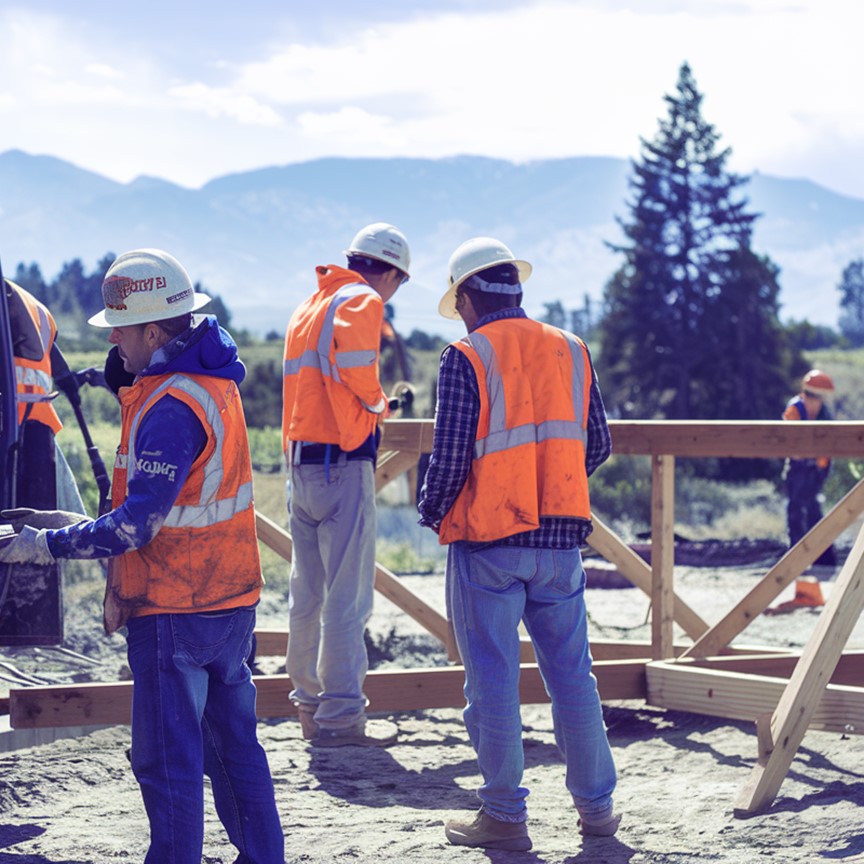
Let's Build Together
Your donation or investment make a difference.

Become a
financial Partner
Join us in making a lasting impact on housing affordability in Plumas County. Contact us to learn about partnership opportunities.

Donate to the
Housing Effort
Every contribution helps us move closer to our goal of creating more attainable housing options. Thank you in advance for your contributions.

Attend Housing
Council Meetings
Engage in discussions, share your ideas, and learn about our progress.

Volunteer Your
Time and Skills
We welcome volunteers to support our outreach, fundraising, and program implementation efforts.
OUR BLOG
Stories of Community, Impact, and Lasting Change
Explore how we’re driving impact through wildfire recovery, housing initiatives, and local partnerships to build a stronger, more resilient Plumas County.
From Housing to Workforce Development: TAF’s Next Chapter in Community Action
For the past three years, The Almanor Foundation (TAF) has...
Read ArticleThe Almanor Foundation: Powering Community Impact in Plumas County
A Look at The Almanor Foundation A community foundation has...
Read Article